-
Anamalai (Indira Gandhi) Wildlife Sanctuary:
Anamalai (Indira Gandhi) Wildlife Sanctuary - Tamil NaduAnamalai wildlife sanctuary is about 90-kms from Coimbatore and is situated at an altitude of 1,400 meters in the Western Ghats near Pollachi. The area of the sanctuary is 958-sq-kms. An ecological paradise, this sanctuary encompasses a National Park. It has just recently been renamed as Indira Gandhi Wildlife Sanctuary.
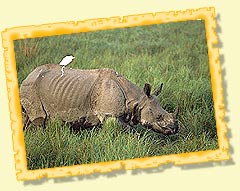
Fauna :
It has various kinds of fauna like Elephant, Gaur, Tiger, Panther, Sloth Bear, Deer, Wild Bear, Wild Dog, Porcupine, Flying Squirrel, Jackal, Pangolin, Civet Cat and birds like Rocket-tailed Drongo, Red Whiskered Bulbul, Tree Pie, Black Headed Oriole, Spotted Dove, Pigeon, etc. The Amaravati reservoir in the Anamalai has large number of crocodiles.
Attractions At The Place :
There are many places of scenic beauty such as Karianshola, Grass hills, Anaikunthi Shola, waterfalls, groves, teak forests, dams and reservoirs. Arrangements are available at Top Slip to take tourists around the sanctuary on elephant back or by van.
How to get there ?
Air -
Peelamedu airport is 10-km from Coimbatore city.Rail -
From Pollachi, there are trains to Coimbatore and Dindigul.Road -
There are regular buses from Coimbatore and Palani to Pollachi, which is the nearest big town. There are two buses a day from Pollachi to the park, at 6.00 am and 3.00 pm. The bus returns to Pollachi at 8.00 am and 6.00 pm. Tourists can also hire a taxi from Pollachi. Anna Zoological Park:
Situated in Vandalur, about 35-km from Chennai, the Anna zoological park is one of the latest and modern zoos of India and the biggest in South East Asia. Spreading over an area of 510 hectares of dry evergreen forests with gently undulating terrain, the specially created open island type enclosures with wet and dry moats and enclosures with hidden walls and simulated natural environment make the animals, feel in their natural environment.
A Ten-Day Celebration :

It's Establishment :
The Anna zoological park situated in the outskirts of Chennai was created out of the Reserve Forests of Vandalur. The forests are of dry deciduous and dry evergreen scrub type. It was in the year 1855 the first Zoo in India was established in Chennai; later on in 1979 it was shifted to its present location at Vandalur.
After initial constructions the zoo was opened to public in 1985. After the zoo was inaugurated in 1985, it has undergone a lot of improvement, with new animals making their home and breeding and more and more features like the Jurassic Park, Nocturnal section, reptile section, aquarium, etc.
Attractions Within The Zoo :
More than 170 species of mammals, aviaries and reptiles are exhibited. Lion safari vehicle, Elephant ride, battery operated vehicles are some of the facilities available inside this park.
The Zoo Animals :
Now there are as many as 81 enclosures - 6 types of deer from Barking Deer, Sambar, Blackbuck, Nilgai, Sangai, Hog Deer, Wolf, Jackal, Hyena, Llama, Otter, a number of Monkey species from Nilgiri Langur to the endangered Lion-tailed Macaque, Baboon, Hanuman Langur and Leaf-capped Langur, an aviary specially for Vedantangal birds and another for Point Calimere ones, then the higher carnivores like the beautiful tiger, the majestic Lion, Panther, Jaguar, etc. to the Elephants, Giraffes and Camels.
Environmental Awareness Programs :
Apart from the range of animal life, there's plenty of environment information to be picked up by everybody. Near every enclosure, there are stone boards talking about the zoological name, its feeding, mating and breeding habits and seasons apart from the place where it is endemic. Trees have placards with their botanical names and other details. A library is also open to public on Mondays and Fridays.
Learning The Adventurous Way :
Environmental awareness and education form an integral part of the zoo's activities. Educational programs have been launched for students (pre-primary, primary and higher secondary and college) and teachers and other visitors.
Apart from this, members of the `Student Zoo Club' get valuable experience as they get exposed to adventure while getting educated about wildlife management, conservation, animal behaviour, their habitats, ecosystems, evolution, animal adaptations, reproduction, nutrition, animal housing and husbandry. The membership is open for 2 years for which they also get a certificate. The club is currently having a membership of about 150 members.
Interestingly, of the more than 8 lakh visitors to the zoo every year, about 3 lakh are students. For those visitors who may find the long trek inside a bit arduous, can ride on the battery vehicles plying inside for a fee.
How to get there ?
Air - Chennai has an airport with both domestic and international terminals. Regular flights connect Chennai with the major cities within the country and also with countries like USA, Singapore, U.K etc.
Rail - Chennai is well connected by rail with the important towns and cities within and beyond the state. Vandalur also has a railway station.
Road - State transport buses and private buses connect Chennai with the major towns and cities within the country. For local transportation local trains, city buses, auto rickshaws and taxis are also available.
-
Guindy National Park:
Guindy National Park is one of the prime visiting spots for those who come to Chennai during vacation period. A recommended picnic spot for the entire family to spend a day amidst nature and return home joyfully in the evening. This National Park encompasses a snake park and a children's park as well.
Guindy National Park is botanically very interesting in as much as it is the only one of its kind to carry even today a derelict vegetation truly representative of the natural thorny scrub jungle of the southern dry zone interspersed with more than 30 tree species whic h include a number of centuries old gigantic shady banyan trees. This park with a network of road's, footpaths, nature trails, lakes and ponds, all situated amidst sylvan surroundings offers good opportunities for viewing wild life.
Historical Background Of The Park :
If we look into the historical background of the Guindy Park, in earlier days it was actually a hunting preserve. Later it was known as "Guindy Lodge" and it belonged to a British citizen named Gilbert Rodericks. In 1817, the owner died with the property heavily mortgaged.
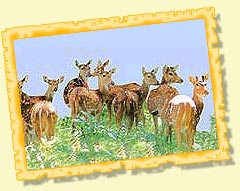
Then in 1821, the Government of Madras purchased it for a sum of Rs. 35,000/ or 10,000 pagodas (pagodas being the gold currency at that time). Later in 1910, it was declared as reserved forests. In 1947, it became the permanent residence of the Governor (400 hectares) and was called "Raj Bhavan".
The then Prime Minister Mr. Jawaharlal Nehru permitted a small area to be cordoned off as a park for children. In 1958, it was actually handed over to the Forest department. The land nearby was allocated for Gandhi Mandapam (1954), IIT (1961), Guru Nanak Educational Society (1970), Rajaji Memorial (1974), Kamaraj Memorial (1975) and Cancer Institute (1977).
Guindy Park boasts of over 24 varieties of trees, for example, Amona Squamosa, Atlanta Monoplylla, Feronia Limonia, Azadirachta India, etc. to mention a few. Also more than 14 varieties of shrubs are also found in the park.
The main faunal attraction of this park is the occurrence of rare Indian Antelope popularly known as the "Black Buck", found nowhere in the world except India. Over 14 types of mammals like Elephant, Antelope, Spotted Deer, Jungle Cat, Toddy Cat, Indian civet, etc. can also be seen here.
The park also accounts for over 37 varieties of birds, like the King Fisher, Blue Jay, Golden Backed Woodpecker, Crow Pheasant, Yellow Wattled Lapwing, Red Wattled Lapwing, Blue Faced Malkoha, Shrikes, Koels, Doves, Minivets, Munias, Barkets, Parakeets, Grey Partridge, Tailor Birds, Robins, Drongos, Quails, Beak Paradise, Flycatcher, Stone Curlew and so on. There are also many kinds of amphibians and snakes to add to the variety that is already available.
How to get there ?
Air - Chennai has an airport with both domestic and international terminals. Regular flights connect Chennai with the major cities within the country and also with countries like USA, Singapore, U.K., etc.
Rail - Chennai is well connected by rail with the important towns and cities within and beyond the state.
Road - State transport buses and private buses connect Chennai with the major towns and cities within the country. Local trains, city buses, auto rickshaws and taxis are also available for local transportation.
Gulf of Mannar Marine National Park
Gulf of Mannar Marine National Park is a marine biosphere, running along with coasts of Ramanathapuram and Tuticorin districts. The entire Gulf of Mannar abounds in distinguished marine life covering 10,500-sq-kms and 21 islands with continuous stretches of coral reef.
Flora And Fauna :
Gulf of Mannar is the first Marine Biosphere Reserve not only in India but also in South East Asia. It is full of coral reefs, Dugong, Turtles and Balano- Glossus. Dolphins could create euphoria to the tourists. The presence of coral reef, flora and fauna here are in their virgin form. The coral reefs, which surround the islands in the area are highly productive and are often referred to as "Underwater Tropical Rain Forest" and a treasure house for marine ornamental fishes.
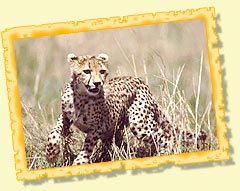
The Marine Reserve :
This unique marine ecosystem of Gulf of Mannar is one of the richest for biodiversity resources in the Indian subcontinent. The richness of its biodiversity can be gauged from the fact that more than 3,600 species of fauna and flora have been recorded in this reserve. Kurasadai Islands, off Mandapam, boasts of a vast expanse of shallow waters.
Moreover, more than 138 villages and towns spread over five districts depend heavily on the fishery resources of the Gulf. Commercial fishing is done in about 5,500 sq. km. and nearly 50,000 people dwelling in 47 villages along the coastline bordering the Gulf of Mannar depend directly on the biodiversity resources of the biosphere reserve for their livelihood.
The establishment of the Gulf of Mannar Marine Biosphere reserve has enhanced India's position as an environmentally responsible country in the comity of nations.
How to get there ?
Air - The nearest airport is at Madurai (150-km).
Rail - The nearest railway stations are the Mandapam railway station and the railway station at Tuticorin.
-
Kunthakulam Bird Sanctuary
Kunthakulam Bird Sanctuary - Tamil NaduKunthakulam bird sanctuary is situated 33-km south of Tirunelveli in Nanguneri taluk. Kunthakulam is a small and natural scenic village, which is covered with natural forests and ponds. During the season January to April every year more than 10 thousand birds from various countries like Pakistan, Myanmar, Sri Lanka, USA, Australia migrate here and when the season is over the birds return. Every day more than 5,000 people come here and enjoy. Ariyakulam, 13-km east of Tirunelveli has another bird sanctuary.
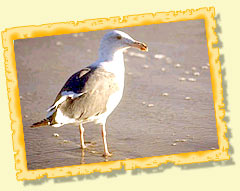
How to get there ?
Tirunelveli is the nearest city, which is well connected by rail and road with the important places within and beyond the state.
Rail - The nearest convenient railway station is at Tirunelveli, which is an important railway junction on the southern railway and is connected to all major cities of South India.
Road - From Tirunelveli, there are regular buses to the sanctuary. A good network of roads serves Tirunelveli. There are bus services to Chennai, Madurai, Trichy, Coimbatore, Kanyakumari, etc.
-
Mudumalai Wildlife Sanctuary
The Mudumalai wildlife sanctuary is located where the Nilgiri Hills, the offshoot of the Western Ghats meet the Eastern Ghats. The Mysore - Ooty highway runs through the sanctuary, following the course of the Mayyar River, which separates Mudumalai from Bandipur.
This 321-sq-kms wide sanctuary encompasses a National Park measuring an area of 103-sq-kms. The sanctuary has varied mixture of flat land, open grassland, swamp and valleys. Apart from the wide range of animal and bird life, the rich fauna of this sanctuary has made Mudumalai very popular with wildlife enthusiasts.
There are tigers at Mudumalai, though it takes a lot of luck and perseverance to spot one of these big cats that are such masters of stealth. But there are several other creatures of the jungle that can be sighted more easily.
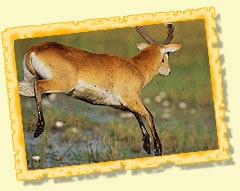
Flora :
The vegetation is quite varied in this region. The hilly terrain of the Western Ghats, clothed in dense mixed and moist deciduous forests, make Mudumalai (the ancient hills) a most attractive wildlife reserve. Bamboos (Bambusa Arundinacea) Natural teak (Tectona Grandis), Anogeissus latifolia, Terminalia, Crenulata/Terminalia Tomontosa, Grewia, and blooming trees like Indian Labumusum, Aredesia, Solanancea are some of the flora.
Fauna
The fauna include Elephants, Gaur, Banner, Macaque, Common Langur, Tigers, Leopards, Chital, Panther, Sloth Bear, Python, Barking Deer, Four Horned Antelope, Otter, Crocodiles (Mugger), Giant Flying Squirrel, Sambar, Hyena, Wild Dog, Wild Boar, Mouse Deer, Spotted Deer, Jackal, Hare, Porcupine and Mongoose.
The birds listed in this sanctuary are Peacock-our National bird, Grey Jungle Fowl, Red Spur Fowl, Grey Partridge Quails, Goggle Eyed Plower, Malabar Whistling Thrush, Large Racket-Tailed Dronge, The Magpie-robin, Spotted Babbler, Small Green Barbet, Green Pigeons, Brown Dove, Malabar Grey Hornbill, Bulbuls, Mynahs, etc. Among birds of prey, Eagles, Hawks, Buzzards, Harriers, Falcons and King Vulture are predominant, besides some migratory water birds.
How to get there ?
Air - The nearest airport is at Coimbatore, 160-km away.
Rail - The sanctuary is located at a distance of 65-km from Udhagamandalam railway station and 95-km from Mysore station.
Road - Gudalur (16-km) is the nearest town to the sanctuary, which is situated along the Udhagamandalam - Mysore highway. This sanctuary could be reached from Mysore as well. There are regular buses from Udhagamandalam, Mysore and the neighbouring towns to the sanctuary.
Mundanthurai Wildlife Sanctuary
Guindy National Park is one of the prime visiting spots for those who come to Chennai during vacation period. A recommended picnic spot for the entire family to spend a day amidst nature and return home joyfully in the evening. This National Park encompasses a snake park and a children's park as well.
Guindy National Park is botanically very interesting in as much as it is the only one of its kind to carry even today a derelict vegetation truly representative of the natural thorny scrub jungle of the southern dry zone interspersed with more than 30 tree species whic h include a number of centuries old gigantic shady banyan trees. This park with a network of road's, footpaths, nature trails, lakes and ponds, all situated amidst sylvan surroundings offers good opportunities for viewing wild life.
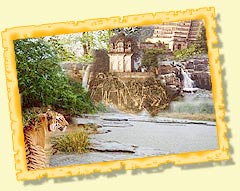
Historical Background Of The Park :
If we look into the historical background of the Guindy Park, in earlier days it was actually a hunting preserve. Later it was known as "Guindy Lodge" and it belonged to a British citizen named Gilbert Rodericks. In 1817, the owner died with the property heavily mortgaged.
Then in 1821, the Government of Madras purchased it for a sum of Rs. 35,000/ or 10,000 pagodas (pagodas being the gold currency at that time). Later in 1910, it was declared as reserved forests. In 1947, it became the permanent residence of the Governor (400 hectares) and was called "Raj Bhavan".
The then Prime Minister Mr. Jawaharlal Nehru permitted a small area to be cordoned off as a park for children. In 1958, it was actually handed over to the Forest department. The land nearby was allocated for Gandhi Mandapam (1954), IIT (1961), Guru Nanak Educational Society (1970), Rajaji Memorial (1974), Kamaraj Memorial (1975) and Cancer Institute (1977).
Guindy Park boasts of over 24 varieties of trees, for example, Amona Squamosa, Atlanta Monoplylla, Feronia Limonia, Azadirachta India, etc. to mention a few. Also more than 14 varieties of shrubs are also found in the park.
The main faunal attraction of this park is the occurrence of rare Indian Antelope popularly known as the "Black Buck", found nowhere in the world except India. Over 14 types of mammals like Elephant, Antelope, Spotted Deer, Jungle Cat, Toddy Cat, Indian civet, etc. can also be seen here.
The park also accounts for over 37 varieties of birds, like the King Fisher, Blue Jay, Golden Backed Woodpecker, Crow Pheasant, Yellow Wattled Lapwing, Red Wattled Lapwing, Blue Faced Malkoha, Shrikes, Koels, Doves, Minivets, Munias, Barkets, Parakeets, Grey Partridge, Tailor Birds, Robins, Drongos, Quails, Beak Paradise, Flycatcher, Stone Curlew and so on. There are also many kinds of amphibians and snakes to add to the variety that is already available.
How to get there ?
Air - Chennai has an airport with both domestic and international terminals. Regular flights connect Chennai with the major cities within the country and also with countries like USA, Singapore, U.K., etc.
Rail - Chennai is well connected by rail with the important towns and cities within and beyond the state.
Road - State transport buses and private buses connect Chennai with the major towns and cities within the country. Local trains, city buses, auto rickshaws and taxis are also available for local transportation
Wildlife in Tamilnadu
India Tour Packages







